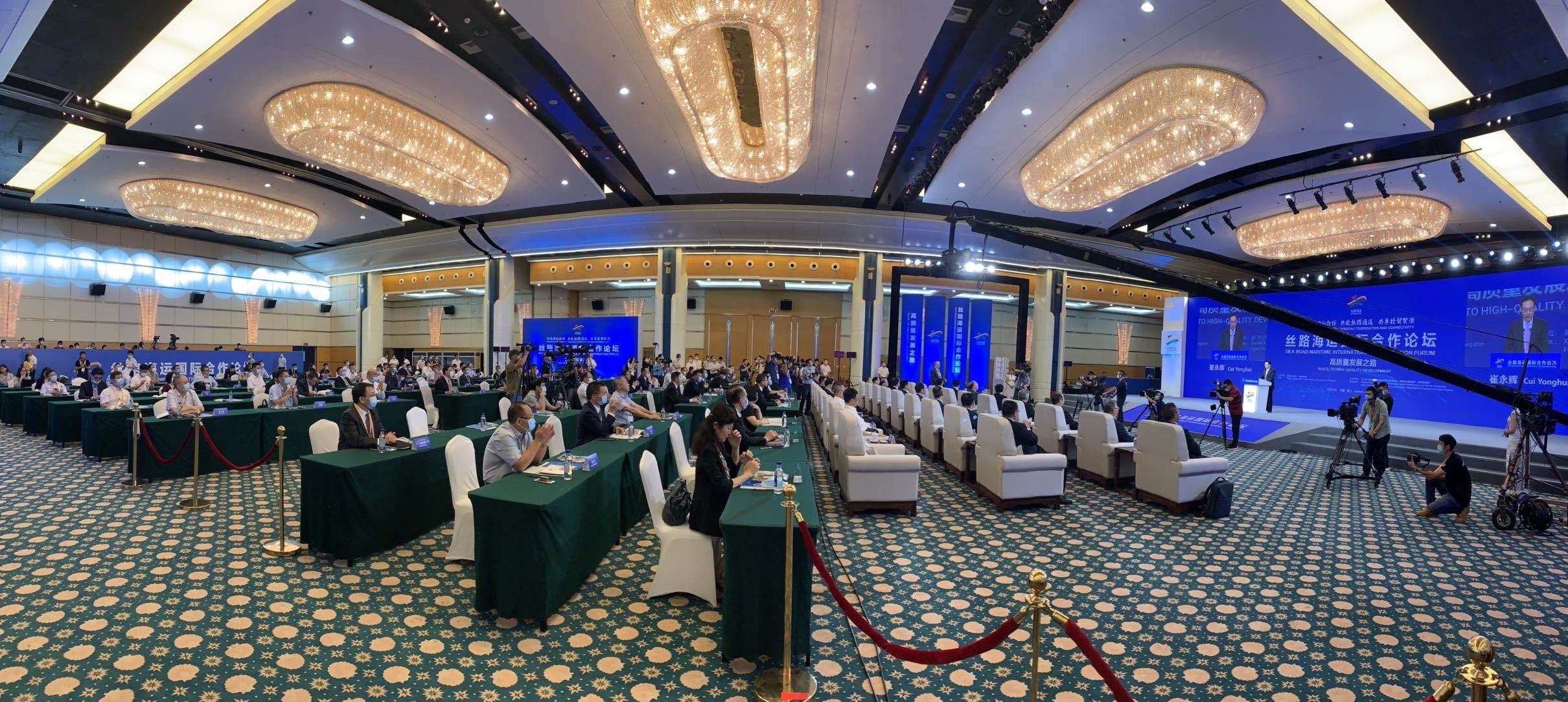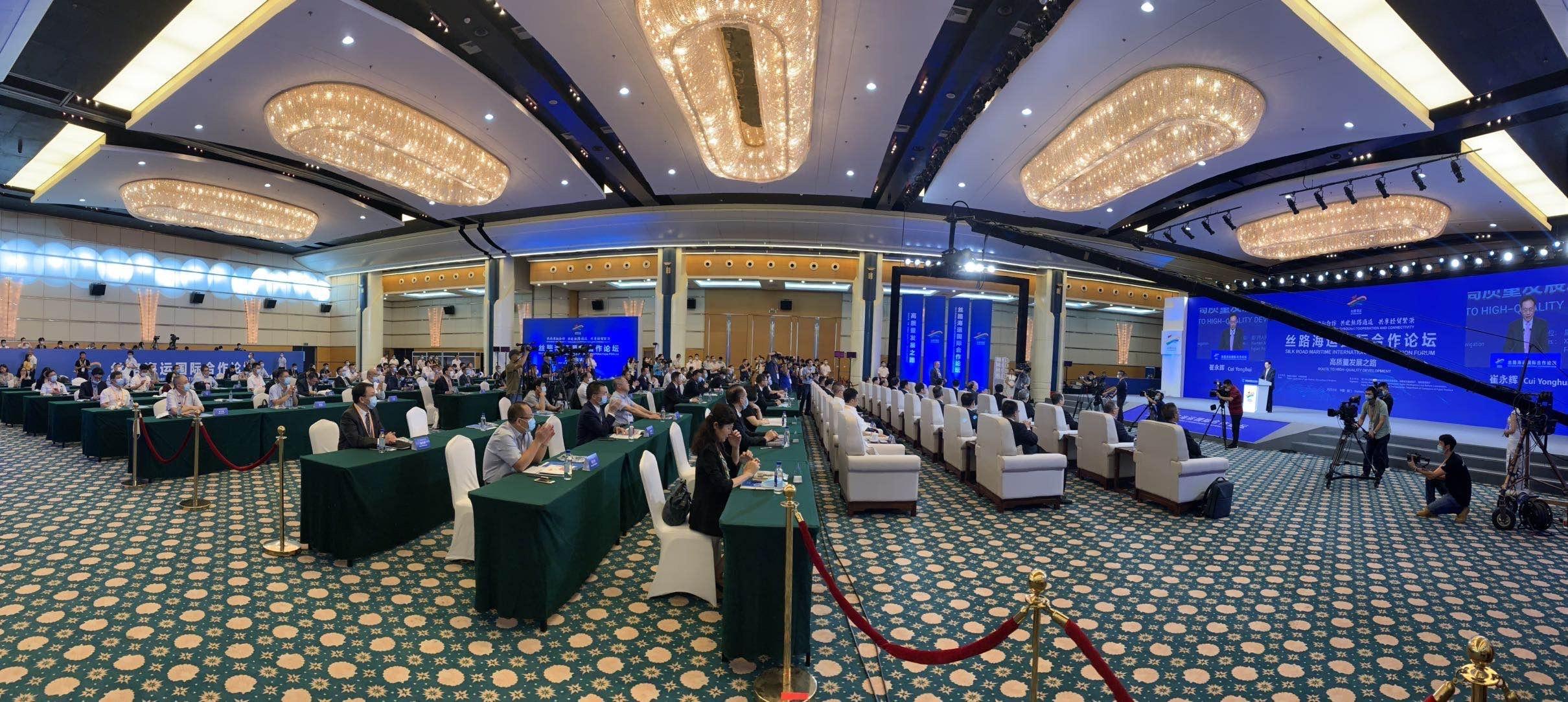
Photo taken on September 8 shows the interior scene of the Silk Road Maritime International Cooperation Forum 2020.
BEIJING, Sept. 11 (Xinhua) -- As China's first international shipping logistics service brand and platform, the Silk Road Maritime has seen growing business volume in recent years, providing opportunities for global enterprises to participate in the construction of Belt and Road Initiative (BRI).
Based on the 21st Century Maritime Silk Road positioning and advantages, the Silk Road Maritime was established by China's Fujian Province in December 2018 and has 62 named shipping routes covering major ports in East Asia, Southeast Asia, South Asia, West Asia, Africa and Europe.
As of the end of August 2020, the Silk Road Maritime has operated more than 3,400 voyages and a total container throughput of more than 3 million TEUs.
Since the outbreak of the COVID-19 pandemic, relevant departments and enterprises of the Silk Road Maritime have launched series of measures to effectively ensure the smooth operation of the industrial chain and supply chain.
In June, the container throughput of China's Xiamen Port increased to 1.005 million TEUs, setting a new record for a single month.
The Silk Road Maritime and other platforms established in recent years are expected to strengthen exchanges and cooperation in various fields such as industry, investment, economy and trade, promote the transformation of maritime advantages into potential international cooperation to achieve common development, mutual benefits and win-win results, said Zhao Long, vice governor of Fujian Province at the Silk Road Maritime International Cooperation Forum 2020 held on September 8.
During the forum, another eight institutions joined the Silk Road Maritime Alliance, making its total members to 183.
(Edited by Gao Jingyan with Xinhua Silk Road, gaojingyan@xinhua.org)




 A single purchase
A single purchase









